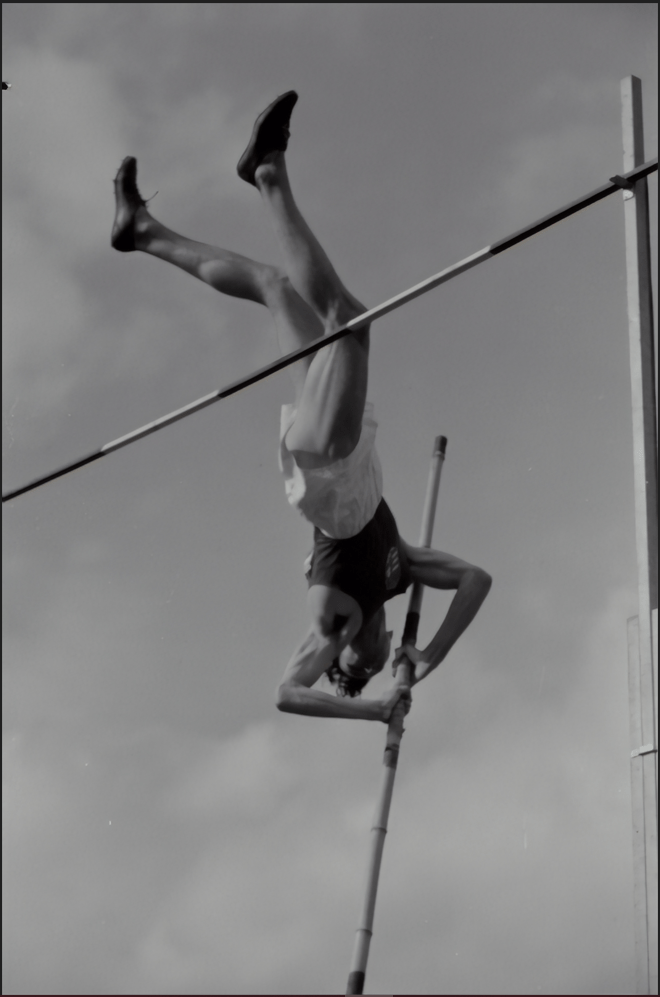Introduction:- Pole vault is a thrilling and visually captivating event in track and field athletics. Athletes catapult themselves over a high bar with the help of a flexible pole, demonstrating a combination of strength, agility, and technique. The sport has evolved over the years, and today, it boasts a rich set of rules and regulations that govern the competition. In this comprehensive guide, we’ll delve into the intricacies of pole vault rules, providing an in-depth understanding of the sport, its history, equipment, techniques, and the safety measures that make it a thrilling yet safe athletic endeavor.
A Brief History of Pole Vault
Pole vaulting can trace its roots back to ancient civilizations, where it was used as a method of overcoming obstacles, like water-filled ditches or defensive walls during warfare. In those times, poles were typically made from materials such as bamboo or wood. The modern pole vault as a sport began to take shape in the 19th century.
As the sport evolved, rules were established to ensure fairness and safety for the athletes. It eventually found its place in track and field athletics, with the first recorded competitions taking place in the mid-19th century in the United Kingdom.
Understanding the Pole Vault Equipment
Pole vaulting requires specialized equipment to ensure the safety of the athletes and the integrity of the competition. Here are the key pieces of equipment used in pole vaulting:
-
Pole: The most crucial piece of equipment in pole vaulting is the pole itself. Poles are typically made from materials like fiberglass, carbon fiber, or a combination of materials. The choice of pole material can significantly affect an athlete’s performance. Poles come in various lengths and flexibilities, and athletes select them based on their height, weight, and personal preferences.
-
Crossbar: The crossbar is the bar that athletes attempt to clear during the event. It is positioned between two uprights and is adjustable in height according to the competition rules.
-
Uprights: Uprights are the vertical posts that hold the crossbar. They are anchored to the ground and positioned at the desired height for the event.
-
Landing Area: The landing area consists of a padded mat placed on the ground on one side of the bar. This area is designed to cushion the athlete’s fall after a successful or unsuccessful vault.
The Rules of Pole Vault
Pole vault, like any other sport, has a set of rules and regulations that govern the competition. These rules are in place to ensure a fair and safe environment for all participants. Here are the key rules of pole vault:
-
Starting Height: The competition begins with a predetermined starting height, and athletes take turns attempting to clear the bar at that height.
-
Three Consecutive Misses: Athletes have three consecutive misses at a given height before they are eliminated from the competition.
-
Ascending Height: After each round, the height of the bar is raised. Athletes must clear the new height to remain in the competition.
-
Breaking the Bar: If an athlete knocks the bar off the uprights while attempting to clear it, it is considered a miss. The bar must be reset to its original position for the next attempt.
-
Scoring: The winner of the competition is the athlete who successfully clears the highest height. If multiple athletes clear the same height, the winner is determined by the number of misses at previous heights.
-
Pole Handling: Athletes are allowed to adjust their pole’s length, grip, and positioning within certain limits. However, any adjustments must be made within a designated area.
-
Crossbar Displacement: If an athlete displaces the crossbar due to improper technique or a violation of the rules, the attempt is considered a miss.
-
Safety Standards: Safety is of utmost importance in pole vault. Equipment must meet specific safety standards, and competition areas should be free from obstacles or hazards that could endanger the athletes.
-
False Starts: Athletes must wait for the starter’s signal before attempting a vault. False starts can result in disqualification.
-
Coach-Athlete Communication: Athletes and their coaches can communicate during the competition. Coaches often play a crucial role in helping athletes select the right poles and offer advice on technique.
Discover the thrilling world of sports – from top athletes to training tips, Pole vault and Carrom gear, and the latest updates in the industry
Common Techniques in Pole Vault
Pole vault requires a unique blend of strength, speed, and technique. Here are some of the common techniques employed by athletes:
-
Planting the Pole: The athlete starts the vault by planting the pole into the box, which is a designated area on the runway. Proper pole placement and timing are critical for a successful vault.
-
Takeoff: As the athlete approaches the pit, they use the energy stored in the pole to propel themselves upwards. The takeoff should be timed perfectly to ensure maximum height and clearance over the bar.
-
The Swing: After takeoff, the athlete’s body follows an arcing trajectory. The pole flexes, storing energy as the athlete swings their legs up and over the bar.
-
Clearing the Bar: Athletes must maintain their body position and control throughout the clearance. Proper body rotation, hip positioning, and precise control are crucial.
-
Landing: A successful vault ends with the athlete landing safely on the mat. Correct landing techniques help minimize the risk of injury.
Safety Measures in Pole Vault
Safety is paramount in pole vault, given the high-speed approach, the forces involved, and the height at which athletes clear the bar. Here are some of the key safety measures in pole vault:
-
Equipment Inspection: Poles, crossbars, and landing mats must undergo regular inspections to ensure they meet safety standards.
-
Secure Runway: The runway should be free from debris, uneven surfaces, or any obstacles that could pose a danger to athletes during their approach.
-
Proper Coaching: Athletes must receive coaching from qualified individuals who understand the mechanics and safety aspects of pole vaulting.
-
Appropriate Poles: Athletes must select poles that match their skill level and experience. Using the wrong pole can lead to injuries.
-
Supervision: Trained officials and coaches should be present during competitions to monitor safety and ensure athletes adhere to the rules.
-
Progressive Training: Athletes should undergo a progressive training program that focuses on building strength, agility, and proper technique. This helps prevent overuse injuries and accidents.
-
Spotters: During training and practice, spotters should be present to assist athletes in case of mishaps.
-
Proper Warm-Up and Cool-Down: Adequate warm-up and cool-down routines are essential to prevent muscle strains and injuries.
Conclusion
Pole vault is a dynamic and exciting sport that requires a unique combination of skills and techniques. With a rich history and a robust set of rules and regulations, pole vaulting has come a long way from its ancient origins. Athletes, coaches, and officials work together to ensure the safety and integrity of the sport, making it a thrilling spectacle for both participants and spectators. Aspiring pole vaulters should remember that while the sport is exhilarating, safety should always be the top priority, and adherence to the rules is crucial for a successful and injury-free experience in pole vault.





